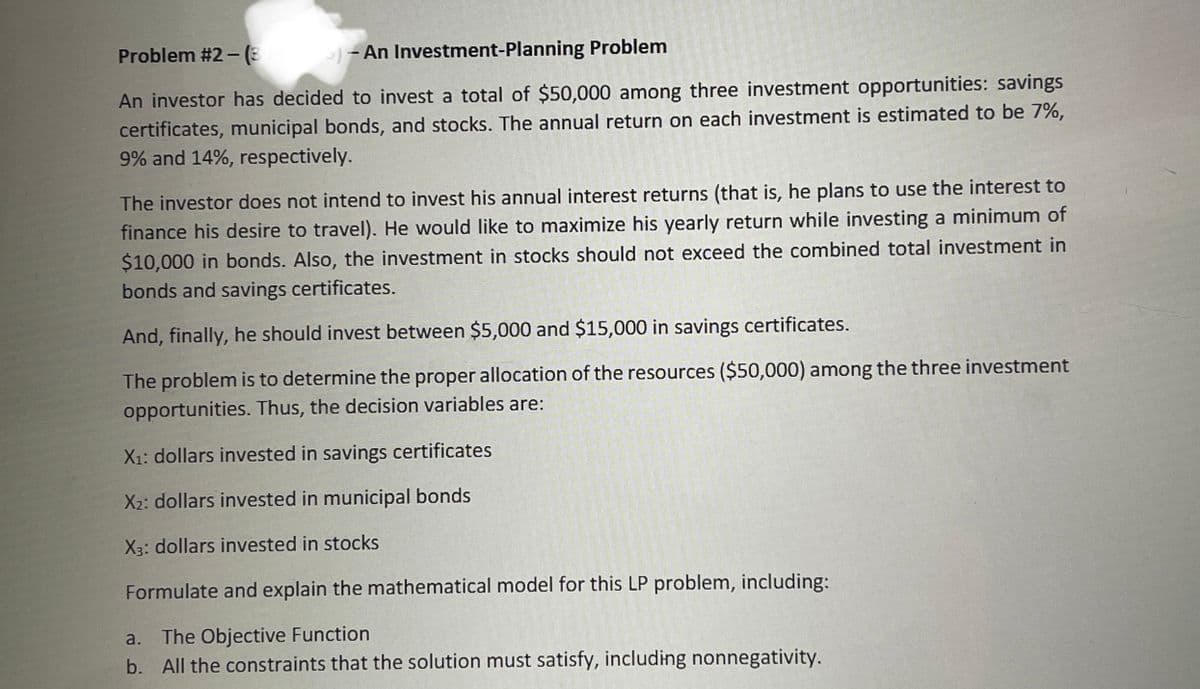X1: dollars invested in savings certificatėš X2: dollars invested in municipal bonds X3: dollars invested in stocks Formulate and explain the mathematical model for this LP problem, including: The Objective Function All the constraints that the solution must satisfy, including nonnegativity. a. b.
X1: dollars invested in savings certificatėš X2: dollars invested in municipal bonds X3: dollars invested in stocks Formulate and explain the mathematical model for this LP problem, including: The Objective Function All the constraints that the solution must satisfy, including nonnegativity. a. b.
Practical Management Science
6th Edition
ISBN:9781337406659
Author:WINSTON, Wayne L.
Publisher:WINSTON, Wayne L.
Chapter5: Network Models
Section5.5: Shortest Path Models
Problem 32P
Related questions
Question
I will give a great review/rating! Thank you (:

Transcribed Image Text:Problem #2 - (E
- An Investment-Planning Problem
An investor has decided to invest a total of $50,000 among three investment opportunities: savings
certificates, municipal bonds, and stocks. The annual return on each investment is estimated to be 7%,
9% and 14%, respectively.
The investor does not intend to invest his annual interest returns (that is, he plans to use the interest to
finance his desire to travel). He would like to maximize his yearly return while investing a minimum of
$10,000 in bonds. Also, the investment in stocks should not exceed the combined total investment in
bonds and savings certificates.
And, finally, he should invest between $5,000 and $15,000 in savings certificates.
The problem is to determine the proper allocation of the resources ($50,000) among the three investment
opportunities. Thus, the decision variables are:
X1: dollars invested in savings certificates
X2: dollars invested in municipal bonds
X3: dollars invested in stocks
Formulate and explain the mathematical model for this LP problem, including:
a. The Objective Function
b. All the constraints that the solution must satisfy, including nonnegativity.
Expert Solution
This question has been solved!
Explore an expertly crafted, step-by-step solution for a thorough understanding of key concepts.
Step by step
Solved in 2 steps with 1 images

Recommended textbooks for you

Practical Management Science
Operations Management
ISBN:
9781337406659
Author:
WINSTON, Wayne L.
Publisher:
Cengage,

Practical Management Science
Operations Management
ISBN:
9781337406659
Author:
WINSTON, Wayne L.
Publisher:
Cengage,